 |
February 13, 2001
Among the most interesting artifacts found by TIGHAR on Nikumaroro are the remains of a shoe which appears to have been similar in many respects to the shoes Earhart was wearing when she disappeared—but is it Amelia’s shoe? Here is Part One of a detailed review of what was found and what it may mean.
Much later in TIGHAR’s investigation, documentation would come to light which would reveal that the anecdotes were rooted in fact, but at the time of the 1991 expedition it was all still rumor. That the grave turned out to contain the skeleton of a very small, possibly stillborn, infant did not add to our confidence that there was any truth to the tale.
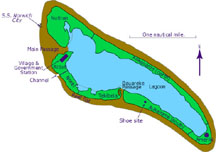 (click on the map to open a new window with a readable-sized map)
(click on the map to open a new window with a readable-sized map)
“Aukeraime South” is the name given to the strip of land on the southern side of the atoll east of the small lagoon outlet known as Bauareke Passage. Originally covered with scrub and small trees, a portion of the area near the passage was cleared and planted to coconuts by the island’s settlers in 1941. Today the area is covered with a fairly dense mix of second and third generation coconut palms mixed with other trees. The stumps of some of the original cocos can still be found.
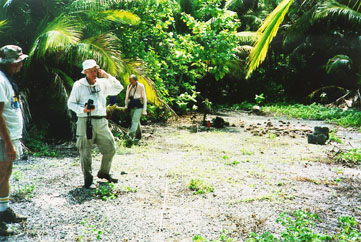 This photo was
taken at the grave site in 1991 as we were preparing to begin the
excavation. The grave itself can be seen at far right. In the center
of the photo is a small tree with gear piled on the ground in the
shade at its base. A few days later, on October 16, 1991, during
the excavation, Dr. Tommy Love (seen at the far left in this photo)
was sitting under that tree changing his boots when a crab scuttled
by. As Tommy watched, the crab knocked aside a leaf revealing a
small black object on the ground. Tommy looked closer and called
to expedition leader Ric Gillespie (in the white hat in this photo),
“Hey! There’s an old shoe heel on the ground over here.”
This photo was
taken at the grave site in 1991 as we were preparing to begin the
excavation. The grave itself can be seen at far right. In the center
of the photo is a small tree with gear piled on the ground in the
shade at its base. A few days later, on October 16, 1991, during
the excavation, Dr. Tommy Love (seen at the far left in this photo)
was sitting under that tree changing his boots when a crab scuttled
by. As Tommy watched, the crab knocked aside a leaf revealing a
small black object on the ground. Tommy looked closer and called
to expedition leader Ric Gillespie (in the white hat in this photo),
“Hey! There’s an old shoe heel on the ground over here.”
We cordoned off an area around the heel and began to methodically remove all the organic material on the surface of the ground, being careful not to disturb any of the other shoe remnants which soon began to appear. These consisted of broken fragments of a rubber sole and a few scraps of leather. Samples of these materials have since been analyzed by the Winterthur Analytical Laboratory in Centreville, Delaware. Senior Scientist Janice H. Carlson was able to determine that the sole was rubber, but could not say whether the rubber was natural or synthetic. The material thought to be leather proved to be proteinaceous material consistent with leather. At the site, we also noted a small concentration of charcoal.
Once the area had been cleaned of all leaves and sticks and other surface detritus we photographed the artifacts in situ and mapped their distribution before collecting them.
The area was swept thoroughly with a metal detector. By this method we found a small rusted metal disc about the size of a nickel and the tiny broken end of a shoe nail.
We then collected and screened the first 3 cm of soil. This process took two days but resulted in the discovery of a few more scraps of what appears to be leather and a small brass eyelet.
Distribution plots of artifacts found at the Aukairame Site.
Click on the graphics to open full-sized versions in new windows.
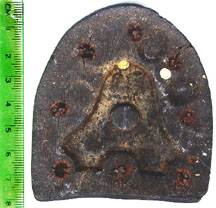
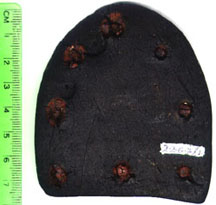
Artifact 2-2-G-7/1, heel embossed “Cat’s Paw Rubber Co. USA.” These photos are of the interior (left) and the exterior, or walking surface (right) of the heel. The white marking on the exterior surface is White-Out™, used to provide a removable surface on which to write a catalog number.
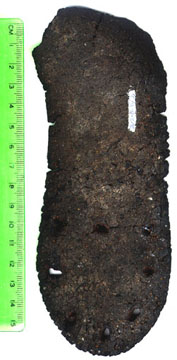

Artifact 2-2-G-7/2, section of rubber shoe sole from back of heel to just behind ball of foot.
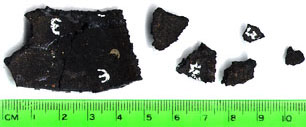
Artifact 2-2-G-7/3, fragments of rubber shoe sole
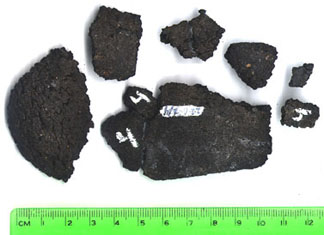
Artifact 2-2-G-7/4, fragments of rubber shoe sole.
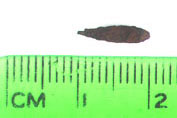
Artifact 2-2-G-7/5, broken shoe nail.
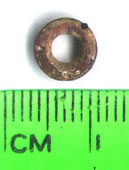
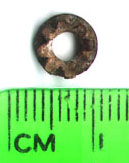
Artifact 2-2-G-7/6, brass eyelet.

Artifact 2-2-G-7/7, metal disc.
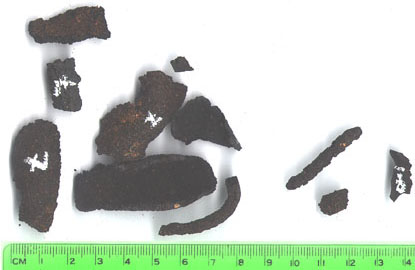
Artifacts 2-2-G-7/8, 9 scraps of leather.
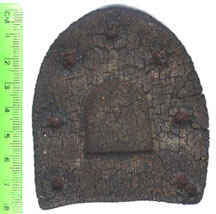
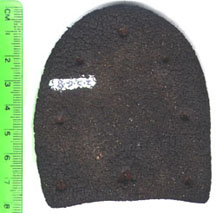
Just outside the cordoned-off area, Frank Fournier, the LIFE magazine photographer accompanying the expedition, noticed a second shoe heel on the ground. This one bore no manufacturer’s label and was cataloged as Artifact 2-2-G-9. The area around the second heel was cordoned off and searched accordingly but nothing more was found.
The sole fragments were re-assembled into an approximation of their original form and measured as shown below.
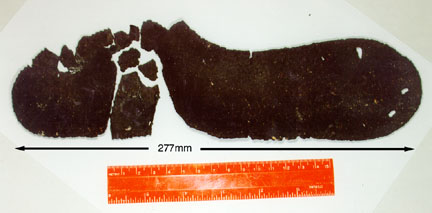
Obviously, without all of the pieces, the dimensions are only approximate.
The Cat’s Paw heel was examined and found to have the markings shown below molded into the structure and the handwritten letters “RN” on the inside of the heel.
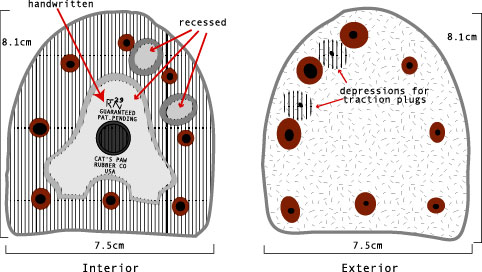
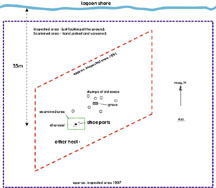

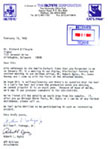



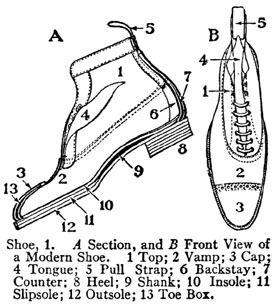
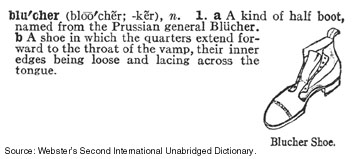
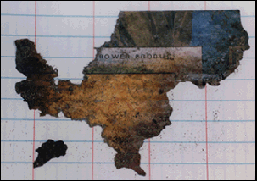 Artifact 2-4-A-3
was a partially burned paper label recovered from a concentration
of ash and charcoal found within 5 cm of the surface where the charcoal
pieces had been found in 1991.
Artifact 2-4-A-3
was a partially burned paper label recovered from a concentration
of ash and charcoal found within 5 cm of the surface where the charcoal
pieces had been found in 1991.